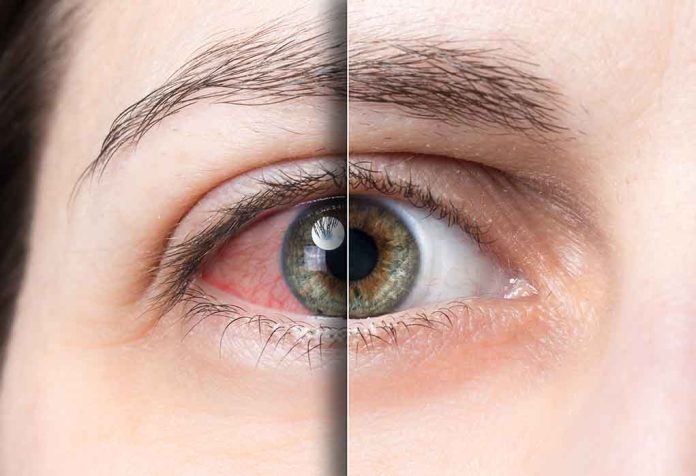
Dry Eyes? Allergies? Here’s What You Need to Know
(AscendHealthy.com) – Anyone who deals with dry eyes knows they are frustrating. Dry eye is a common, chronic condition affecting millions of Americans yearly. It can present with a myriad of symptoms, is often very uncomfortable, and can potentially cause vision problems. Understanding risk factors and symptoms of dry eyes can help you determine when to see a doctor to seek a diagnosis and appropriate treatment.
Dry Eye Signs and Symptoms
There are a variety of dry eye signs and symptoms that an individual may experience. Although these symptoms may present slightly different from one individual to the next, they usually affect both eyes and can include:
- a burning, stinging, or scratchy feeling in the eyes
- redness in the eyes
- increased sensitivity to light
- a feeling of having something in the eye
- blurry vision
- eye fatigue
- stringy mucous near the eye
- watery eyes – caused as the body tries to respond to the irritation caused by dry eye
What Causes Dry Eyes?
Dry eyes occur when the eyes do not make enough tears to keep them wet or when tears dry up too quickly. It can also occur when tears otherwise do not work correctly and cannot keep the eyes moist.
Risk factors for dry eye include age and gender. Individuals that are aged 50 or older are more likely to experience dry eye as their body ages and has to work harder to make tears. Women are also at risk for dry eyes due to hormonal changes during pregnancy or menopause.
Additional factors that may contribute to dry eyes include, but are not limited to:
- Wearing contact lenses
- Medications – side effects of some medicines can include dry eyes
- Health Issues – Diabetes, Lupus, thyroid problems, and others can potentially lead to dry eye
- Nutritional Deficiencies – Individuals that do not get enough vitamin A or omega-3 fatty acids may experience dry eyes
- Environmental Factors – Spending significant time in windy, smoky, or dry environments can cause tears to dry up more quickly
Dry Eyes vs. Allergies
Dry eyes and allergy symptoms often overlap; some patients may have both issues occurring simultaneously. However, individuals can recognize allergies in several ways.
Exposure to allergens releases histamines that cause inflammation and swelling. Common allergens include pollen, mold, smoke, pet dander, and dust. Other allergens can include perfume, skin care products, and even medications.
The most significant difference in symptoms between these two issues is that allergies typically cause more intense itching. When watery eyes or a runny nose accompanies the itching, it is more likely to be caused by allergies.
Is It an Infection?
Sometimes infections can occur in the eyes from bacteria, viruses, or fungus. Symptoms from infections can mimic dry eyes, but there are other tale tell signs of an eye infection:
- Experiencing pain or irritation in the eye
- The lymph nodes around the ear are enlarged
- There is a crustiness around the eyelashes and/or eyelids
- There is a yellow discharge from the eyes
- Swelling in the eyelids
Whenever someone suspects an eye infection, it is important to have it diagnosed by a doctor and treated immediately to avoid potential issues or eye damage.
Diagnosing Dry Eyes
An ophthalmologist can complete a thorough eye exam which will include looking at the eyelids, surface of the eye, and blinking. Diagnosing dry eyes can be done through additional testing that might measure the quality of tears or how quickly the eye produces tears. Anyone experiencing prolonged signs and symptoms dry eye signs or symptoms should speak with their doctor. Whatever the cause of symptoms, proper diagnosis is important for receiving the appropriate treatment.
Copyright 2023, AscendHealthy.com




















